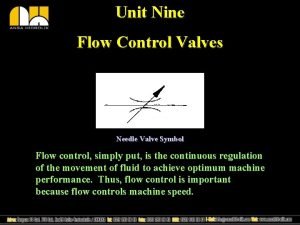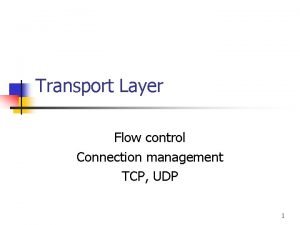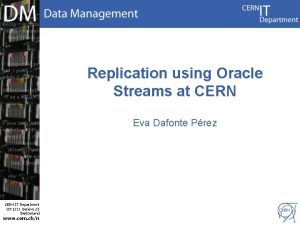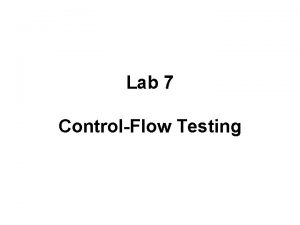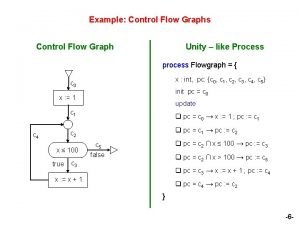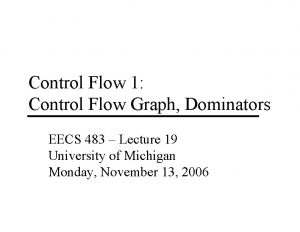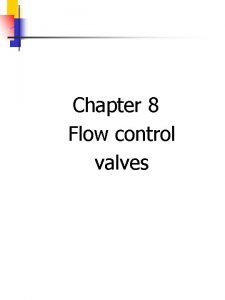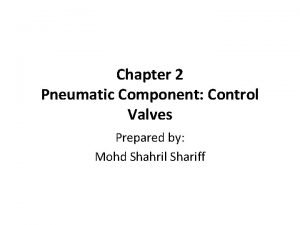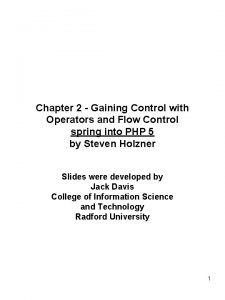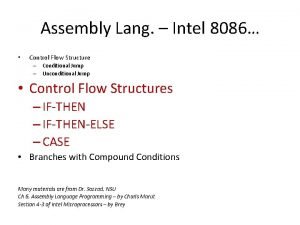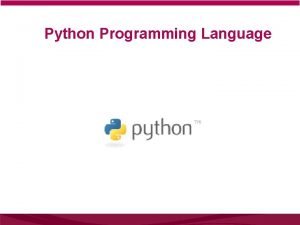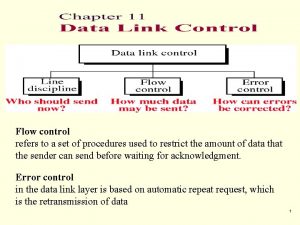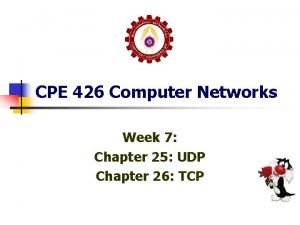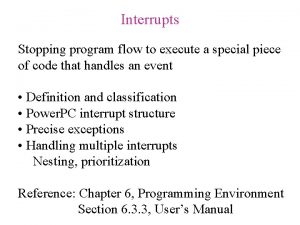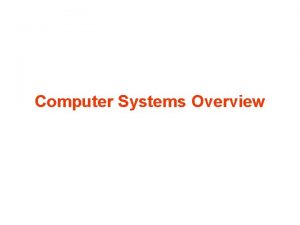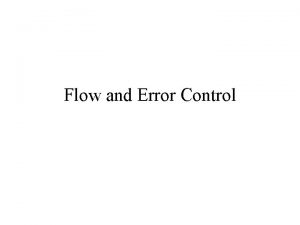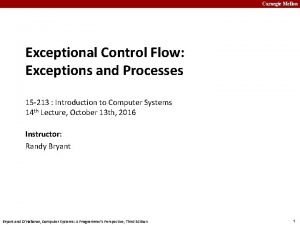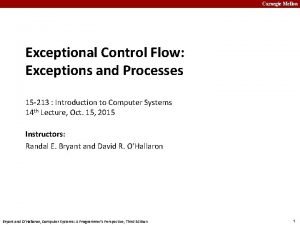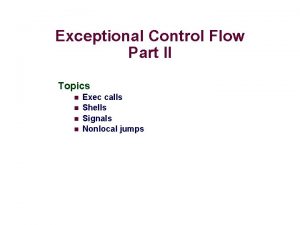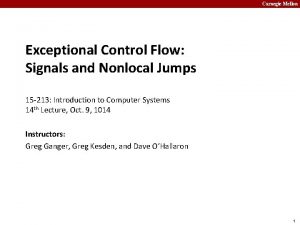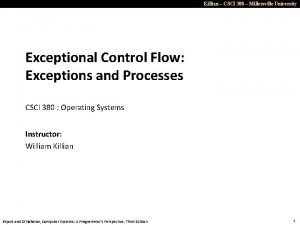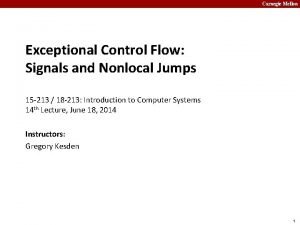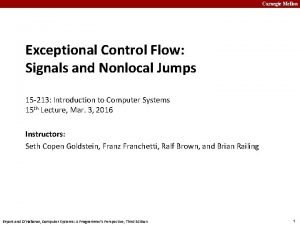Exceptional Flow Control I Control Flow Up to













![Fault Example: Page fault example int a[1000]; main () { a[500] = 13; } Fault Example: Page fault example int a[1000]; main () { a[500] = 13; }](https://slidetodoc.com/presentation_image_h/e453326a5630606295e73ee6265557f0/image-14.jpg)
![Fault Example: Segmentation fault int a[1000]; main(){ a[5000] = 13; } Memory Reference User Fault Example: Segmentation fault int a[1000]; main(){ a[5000] = 13; } Memory Reference User](https://slidetodoc.com/presentation_image_h/e453326a5630606295e73ee6265557f0/image-15.jpg)








































![execve: Loading and Running Programs int execve(char *filename, char *argv[], char *envp[]) Loads and execve: Loading and Running Programs int execve(char *filename, char *argv[], char *envp[]) Loads and](https://slidetodoc.com/presentation_image_h/e453326a5630606295e73ee6265557f0/image-56.jpg)





![argv and envp argv[ ] argv[0] argv[1] "ls" . . . "-lt" argv[argc-1] NULL argv and envp argv[ ] argv[0] argv[1] "ls" . . . "-lt" argv[argc-1] NULL](https://slidetodoc.com/presentation_image_h/e453326a5630606295e73ee6265557f0/image-62.jpg)




- Slides: 66

Exceptional Flow Control I

Control Flow Up to Now: two mechanisms for changing control flow: Jumps/branches Call and return using the stack Both react to changes in internal program state. Insufficient for a useful system Need CPU to react to changes in external system state as well! data arrives from a disk or a network adapter. User hits Ctrl-c at the keyboard System timer expires Instruction divides by zero Need mechanisms for “exceptional control flow” – 2–

Exceptional Control Flow Change in control flow in response to a system event Low level Mechanisms 1. Exceptions and interrupts Higher Level Mechanisms 2. Process context switch 3. Signals 4. Nonlocal jumps (setjmp/longjmp) – 3–

Exceptions and interrupts – 4–

System context for exceptions Keyboard Processor Interrupt controller Mouse Keyboard controller Modem Serial port controller Printer Parallel port controller Local/IO Bus Memory IDE disk controller SCSI controller Video adapter Network adapter Display Network SCSI bus disk – 5– CDROM

Exceptions and interrupts Transfer of control to the OS in response to some event Require mode change from user to kernel/supervisor External events: I/O request completes, typing Ctrl-C Exceptional program execution events: Divide by 0, page fault User code Event I_current I_next Kernel code Exception • Return to I_current • Return to I_next • Abort – 6– Exception processing by exception handler

Interrupt Vectors Many types of interrupts and exceptions Each type of event has a unique exception number k Index into jump table in OS (a. k. a. , interrupt vector table) Jump table entry k points to a function (exception handler). Handler k is called each time exception k occurs. code for handler 0 Exception numbers 0 1 2 interrupt vector . . . n-1 IDTR (Interrupt Descriptor Table Register) – 7– code for handler 1 code for handler 2 . . . code for handler n-1

Asynchronous Exceptions (Interrupts) Caused by events external to the processor Indicated by setting the processor’s interrupt pin Causes a handler to run Handler returns to “next” instruction when finished Examples: Timer interrupt Every few ms, an external timer triggers an interrupt Used by the kernel to take back control from user programs I/O interrupts hitting Ctrl-c at the keyboard arrival of a packet from a network arrival of a data sector from a disk – 8–

Synchronous Exceptions Caused by events that occur as a result of executing an instruction: Traps (intentional exceptions) Examples: system calls, breakpoint traps, special instructions Returns control to “next” instruction Faults (unintentional exceptions) Potentially recoverable Examples: page faults (recoverable), protection faults (unrecoverable). Either re-executes faulting (“current”) instruction or aborts. Aborts Unintentional and unrecoverable Examples: parity error, machine check. Aborts current program – 9–

Examples of x 86 -64 Exceptions – 10 – Exception Number Description Exception Class 0 Divide by zero Fault 13 General protection fault Fault 14 Page fault Fault 18 Machine check Abort 128 System call Trap 32 -255 OS-defined exceptions Interrupt or trap

Trap example: System Call Trap into OS (kernel) – 11 – Implemented via int 0 x 80 or syscall instruction Each x 86 -64 system call has a unique ID number that is passed in %rax Number Name Description 0 read Read file 1 write Write file 2 open Open file 3 close Close file 4 stat Get info about file 57 fork Create process 59 execve Execute a program 60 _exit Terminate process 62 kill Send signal to process

System Call example Opening a File User calls: open(filename, options) Calls __open function, which invokes system call instruction syscall Function __open executes system call instruction 000000 e 5 d 70 <__open>: . . . e 5 d 79: b 8 02 00 00 00 e 5 d 7 e: 0 f 05 e 5 d 80: 48 3 d 01 f 0 ff ff. . . e 5 dfa: c 3 mov $0 x 2, %eax # open is syscall #2 syscall # Return value in %rax cmp $0 xfffffff 001, %rax retq %rax contains syscall number Arguments in %rdi, %rsi, %rdx, %r 10, %r 8, %r 9 Negative value is an error corresponding to negative errno – 12 – OS opens file and gets it ready for reading or writing Returns integer file descriptor

System Call Example: Opening File 000000 e 5 d 70 <__open>: . . . e 5 d 79: b 8 02 00 00 00 e 5 d 7 e: 0 f 05 e 5 d 80: 48 3 d 01 f 0 ff ff. . . e 5 dfa: c 3 mov $0 x 2, %eax # open is syscall #2 syscall # Return value in %rax cmp $0 xfffffff 001, %rax retq User code syscall cmp Kernel code Exception Open file Returns – 13 –
![Fault Example Page fault example int a1000 main a500 13 Fault Example: Page fault example int a[1000]; main () { a[500] = 13; }](https://slidetodoc.com/presentation_image_h/e453326a5630606295e73ee6265557f0/image-14.jpg)
Fault Example: Page fault example int a[1000]; main () { a[500] = 13; } Memory Reference User writes to memory location That portion (page) of user’s memory is currently on disk 80483 b 7: c 7 05 10 9 d 04 08 0 d movl $0 xd, 0 x 8049 d 10 OS page handler must load page into physical memory Returns to faulting instruction Successful on second try User code movl – 14 – Kernel code Exception: page fault Return and reexecute movl Copy page from disk to memory
![Fault Example Segmentation fault int a1000 main a5000 13 Memory Reference User Fault Example: Segmentation fault int a[1000]; main(){ a[5000] = 13; } Memory Reference User](https://slidetodoc.com/presentation_image_h/e453326a5630606295e73ee6265557f0/image-15.jpg)
Fault Example: Segmentation fault int a[1000]; main(){ a[5000] = 13; } Memory Reference User writes to memory location Address is not valid 80483 b 7: c 7 05 60 e 3 04 08 0 d movl $0 xd, 0 x 804 e 360 OS page handler detects invalid address Sends SIGSEGV signal to user process User process exits with “segmentation fault” User code movl – 15 – Kernel code Exception: page fault Detect invalid address Signal process

Exceptional Control Flow Change in control flow in response to a system event Low level Mechanisms 1. Exceptions and interrupts Higher Level Mechanisms 2. Process context switch 3. Signals 4. Nonlocal jumps (setjmp/longjmp) – 16 –

Recall Processes A process is an instance of a running program. Process provides each program with two key abstractions: Logical control flow Each program seems to have exclusive use of the CPU Private address space Each program seems to have exclusive use of main memory. How are these Illusions maintained? Process executions interleaved (multitasking) Address spaces managed by virtual memory system Exceptions instrumental for process management Memory Stack Heap Data Code CPU Registers – 17 –

Multiprocessing: The Illusion Memory Stack Heap Data Code CPU CPU Registers … Data Code CPU runs many processes Applications and background tasks CPU runs one process at a time, but it appears to user(s) as if all processes executing simultaneously How? – 18 – Processes continually switch When process needs I/O resource or timer event occurs

Context Switching mechanism Processes are managed by the operating system kernel Important: the kernel is not a separate process, but rather runs as part of some existing process Control flow passes from one process to another via a context switch. Process A Process B user code kernel code Time user code kernel code user code – 19 – context switch

Context switching Memory Stack Heap Data Code Saved registers … Data CPU Registers Single processor executes multiple processes – 20 – Process executions interleaved (multitasking) Address spaces managed by virtual memory system (later) Register values for nonexecuting processes saved in memory (usually)

Context switching Memory Stack Heap Data Code Saved registers … Data CPU Registers Save current registers in memory – 21 –

Context switching Memory Stack Heap Data Code Saved registers … Data CPU Registers Schedule next process for execution – 22 –

Context switching Memory Stack Heap Data Code Saved registers … Data CPU Registers Load saved registers and switch address space (context switch) – 23 –

Multiprocessors Memory – 24 – Stack Heap Data Code Saved registers CPU Registers … Data Multicore processors Multiple CPUs on single chip Share main memory (and some of the caches) Each executes a separate process Scheduling of processors onto cores done by kernel

Example Tasks: 254 total, 1 running, 253 sleeping, 0 stopped, 0 zombie %Cpu(s): 1. 7 us, 1. 6 sy, 0. 0 ni, 96. 4 id, 0. 3 wa, 0. 0 hi, 0. 0 st Ki. B Mem: 32890072 total, 32204380 used, 685692 free, 782968 buffers Ki. B Swap: 33459196 total, 23372 used, 33435824 free. 14354472 cached Mem PID 2375 8994 9035 25310 9121 25783 USER wuchang root wuchang PR 20 20 20 NI VIRT RES SHR S 0 3175820 914904 864160 S 0 1425804 126280 56668 S 0 449308 64872 38552 S 0 320724 119724 38060 S 0 903836 183412 26108 S 0 653192 31364 14136 S %CPU %MEM TIME+ COMMAND 5. 0 2. 8 1601: 26 Virtual. Box 4. 6 0. 4 0: 07. 72 chrome 3. 0 0. 2 0: 02. 72 chrome 2. 3 0. 4 127: 30. 36 Xorg 1. 7 0. 6 0: 08. 28 chrome 1. 0 0. 1 6: 23. 03 gnome-term+ Running program “top” or “ps auxw” System has 254 processes Identified by Process ID (PID) – 25 –

Programmatic process control in C – 26 –

Terminating Processes Process terminates for one of three reasons: Receiving a signal whose default action is to terminate Returning from the main routine or directly calling the exit function void exit(int status) Terminates with an exit status of status Convention: normal return status is 0, nonzero on error Another way to explicitly set the exit status is to return an integer value from the main routine exit is called once but never returns. – 27 –

Creating Processes Parent process creates a new running child process by calling fork int fork(void) Child is identical to parent, except Call returns child’s process ID (PID) to parent process Call returns 0 to the child process, fork is interesting (and often confusing) because it is called once but returns twice – 28 –

Fork Up until now, sequential execution in single program Most modern applications employ concurrency Fork provides coarse, process-level concurrency Identical, but separate address spaces Only difference is return value from fork call different Child gets identical copies of the parent’s open file descriptors (stdout same in both parent and child) Variable x has a value of 1 when fork returns in both parent and child Subsequent changes to x are independent Can’t predict execution order of parent and child – 29 –

if (fork() == 0) { printf("hello from childn"); } else { printf("hello from parentn"); } What about errors? – 30 –

System Call Error Handling On error, Unix system-level functions typically return -1 and set global variable errno to indicate cause. Return status should be checked after every system-level function Example: if ((pid = fork()) < 0) { fprintf(stderr, "fork error: %sn", strerror(errno)); exit(0); } – 31 –

Error-handling wrappers Can be simplified using wrappers: pid = Fork(); pid_t Fork(void) { pid_t pid; } if ((pid = fork()) < 0) unix_error("Fork error"); return pid; void unix_error(char *msg) /* Unix-style error */ { fprintf(stderr, "%s: %sn", msg, strerror(errno)); exit(0); } – 32 –

Fork Example #1 void fork 1() { int x = 1; pid_t pid = fork(); if (pid == 0) { printf("Child has x = %dn", ++x); } else { printf("Parent has x = %dn", --x); } printf(“PID %d with x = %dn", getpid(), x); } … Parent has x = 0 PID 23223 with x = 0 Child has x = 2 PID 23224 with x = 2 #include <sys/types. h> #include <unistd. h> pid_t getpid(void); /* Get process ID */ pid_t getppid(void); /* Get parent process ID */ – 33 –

Fork Example #1 Graph visualization Time on x-axis Vertical lines are fork calls Child spawned on y-axis Child has x = 2 (x=1) Parent has x = 0 – 34 – PID. . with x = 2 PID. . with x = 0 void fork 1() { int x = 1; pid_t pid = fork(); if (pid == 0) { printf("Child has x = %dn", ++x); } else { printf("Parent has x = %dn", --x); } printf(“PID %d with x = %dn", getpid(), x); }

Fork Example #2 Both parent and child continue forking void fork 2() { printf("L 0n"); fork(); printf("L 1n"); fork(); printf("Byen"); } – 35 – L 0 L 1 Bye Bye

Fork Example #3 Both parent and child continue forking void fork 3() { printf("L 0n"); fork(); printf("L 1n"); fork(); printf("L 2n"); fork(); printf("Byen"); } – 36 – Bye L 2 Bye L 1 L 0 L 1 L 2 Bye Bye L 2 Bye

Fork Example #4 Nested fork in parent void fork 4() { printf("L 0n"); if (fork() != 0) { printf("L 1n"); if (fork() != 0) { printf("L 2n"); fork(); } } printf("Byen"); } – 37 – Bye L 0 L 1 L 2 Bye

Fork Example #5 Nested fork in child void fork 5() { printf("L 0n"); if (fork() == 0) { printf("L 1n"); if (fork() == 0) { printf("L 2n"); fork(); } } printf("Byen"); } – 38 – Bye L 2 L 1 L 0 Bye Bye

Fork Example #6 atexit() Registers a function to be executed upon exit void cleanup(void) { printf("cleaning upn"); } void fork 6() { atexit(cleanup); fork(); exit(0); } – 39 – cleaning up

Practice problem 8. 2 Consider the following program int main() { int x = 1; if (fork() == 0) printf(“printf 1: x=%dn”, ++x); printf(“printf 2: x=%dn”, --x); exit(0); } What is the output of the child process? printf 1: x=2 printf 2: x=1 What is the output of the parent process? printf 2: x=0 – 40 –

Practice problem 8. 11 Consider the following program int main() { int i; for (i = 0; i < 2; i++) fork(); printf(“hello!n”); exit(0); } How many “hello” output lines does this program print? 4 – 41 –

Practice problem 8. 12 Consider the following program void doit() { fork(); printf(“hellon”); return; } int main() { doit(); printf(“hellon”); exit(0); } How many “hello” output lines does this program print? 8 – 42 –

Reaping Child Processes When a child process terminates, it stays around and consumes system resources until reaped by parent Must keep its exit status to deliver to parent Called a “zombie” Living corpse, half alive and half dead Parent must “reap” terminated child Performed by parent on child via wait or waitpid Parent is given exit status information Kernel then deletes zombie child process What if Parent Doesn’t Reap? Child zombie stays around If parent terminates without reaping a child, then child will be reaped by init process – 43 –

Zombie Example void fork 7() { if (fork() == 0) { /* Child */ printf("Terminating Child, PID = %dn", getpid()); exit(0); } else { printf("Running Parent, PID = %dn", getpid()); while (1) ; /* Infinite loop */ } } linux>. /forks 7 & [1] 6639 Running Parent, PID = 6639 Terminating Child, PID = 6640 linux> ps PID TTY TIME CMD 6585 ttyp 9 00: 00 tcsh 6639 ttyp 9 00: 03 forks 6640 ttyp 9 00: 00 forks <defunct> 6641 ttyp 9 00: 00 ps linux> kill 6639 [1] Terminated linux> ps PID TTY TIME CMD 6585 ttyp 9 00: 00 tcsh 6642 ttyp 9 00: 00 ps – 44 – ps shows zombie child process as “defunct” Killing parent allows child to be reaped by init

Non-terminating Child Example void fork 8() { if (fork() == 0) { /* Child */ printf("Running Child, PID = %dn“, getpid()); while (1) ; /* Infinite loop */ } else { printf("Terminating Parent, PID = %dn”, getpid()); exit(0); } } linux>. /forks 8 Terminating Parent, PID = 6675 Running Child, PID = 6676 linux> ps PID TTY TIME CMD 6585 ttyp 9 00: 00 tcsh 6676 ttyp 9 00: 06 forks 6677 ttyp 9 00: 00 ps linux> kill 6676 linux> ps PID TTY TIME CMD 6585 ttyp 9 00: 00 tcsh – 45 – 6678 ttyp 9 00: 00 ps Child process still active even though parent has terminated Must kill explicitly, or else will keep running indefinitely

wait: Synchronizing with children Parent reaps a child by calling the wait function int wait(int *child_status) Suspends current process until one of its children terminates Return value is the pid of the child process that terminated If child_status != NULL, then value is set to a status indicating why the child process terminated Checked using macros defined in wait. h – 46 –

wait: Synchronizing with children void fork 9() { int child_status; } if (fork() == 0) { printf("HC: hello from childn"); } else { printf("HP: hello from parentn"); wait(&child_status); printf("CT: child has terminatedn"); } printf("Byen"); HC Bye HP – 47 – CT Bye

wait Example With wait, children return in arbitrary order WIFEXITED macro to see if child exited normally WEXITSTATUS macro to get information about exit status void fork 10() { pid_t pid[N]; int i, child_status; } – 48 – for (i = 0; i < N; i++) if ((pid[i] = fork()) == 0) { exit(100+i); /* Child */ } for (i = 0; i < N; i++) { /* Parent */ pid_t wpid = wait(&child_status); if (WIFEXITED(child_status)) printf("Child %d terminated with exit status %dn", wpid, WEXITSTATUS(child_status)); else printf("Child %d terminated abnormallyn", wpid); } Child Child 3565 3564 3563 3562 3566 terminated terminated with with exit exit status status 103 102 101 100 104

waitpid: Wait for specific children Used to wait on specific children pid_t waitpid(pid_t pid, int &status, int options) Suspends process until specific child terminates If pid == -1 , then same as wait() void fork 11() { pid_t pid[N]; int i; int child_status; – 49 – } for (i = 0; i < N; i++) if ((pid[i] = fork()) == 0) exit(100+i); /* Child */ for (i = N-1; i >= 0; i--) { pid_t wpid = waitpid(pid[i], &child_status, 0); if (WIFEXITED(child_status)) printf("Child %d terminated with exit status %dn", wpid, WEXITSTATUS(child_status)); else printf("Child %d terminated abnormallyn", wpid); }

wait/waitpid Examples Using wait (fork 10) Child Child 3565 3564 3563 3562 3566 terminated terminated with with exit exit status status 103 102 101 100 104 Using waitpid (fork 11) Child Child – 50 – 3572 3571 3570 3569 3568 terminated terminated with with exit exit status status 104 103 102 101 100

Practice problem 8. 3 Consider the following program int main() { if (fork() == 0) printf(“a”); else { printf(“b”); waitpid(-1, NULL, 0); } printf(“c”); exit(0); } List all possible output sequences of this program. abcc, bacc, acbc Can not have bcac! – 51 –

Practice problem 8. 4 Consider the following program int main() { int status; pid_t pid; printf(“Hellon”); pid = fork(); printf(“%dn”, !pid); if (pid != 0) { if (waitpid(-1, &status, 0) > 0) { if (WIFEXITED(status) != 0) printf(“%dn”, WEXITSTATUS(status)); } printf(“Byen”); exit(2); } How many output lines does this program generate? 6 What is one possible ordering of these output lines? – 52 – Hello => 0 => 1 => Bye => 2 => Bye

Suspending processes Two methods sleep() Suspends a running process for a specified period of time #include <unistd. h> unsigned int sleep(unsigned int secs); Returns 0 if the requested amount of time has elapsed Returns the number of seconds still left to sleep otherwise Process can prematurely wakeup if interrupted by a signal pause() Suspends a running process until a signal is received #include <unistd. h> int pause(void); – 53 –

Practice problem 8. 5 walkthrough Write a wrapper function for sleep() called snooze() that behaves exactly as sleep() but prints out a message describing how long the process actually slept unsigned int snooze(unsigned int secs) { unsigned int rc = sleep(secs); printf(“Slept for %u of %u secs. n”, secs-rc, secs); return rc; } – 54 –

Running new programs fork creates an identical copy of a process How can one run a new program not a duplicate of one? – 55 –
![execve Loading and Running Programs int execvechar filename char argv char envp Loads and execve: Loading and Running Programs int execve(char *filename, char *argv[], char *envp[]) Loads and](https://slidetodoc.com/presentation_image_h/e453326a5630606295e73ee6265557f0/image-56.jpg)
execve: Loading and Running Programs int execve(char *filename, char *argv[], char *envp[]) Loads and runs in current process Executable filename … with argument list argv … and environment variable list envp “name=value” strings (e. g. SHELL=/bin/zsh) Overwrites code, data, and stack Retains only PID, open files, and signal context Called once and never returns … unless there is an error – 56 –

execve Example Executes “/bin/ls –lt /usr/include” in child process using current environment (argc == 3) myargv environ – 57 – myargv[argc] = NULL myargv[2] myargv[1] myargv[0] envp[n] = NULL envp[n-1] … envp[0] “/usr/include” “-lt” “/bin/ls” “PWD=/home/w” “USER=w” if ((pid = Fork()) == 0) { /* Child runs program */ if (execve(myargv[0], myargv, environ) < 0) { printf("%s: Command not found. n", myargv[0]); exit(1); } }

Structure of the stack when a new program starts Null-terminated environment variable strings Null-terminated command-line arg strings envp[n] == NULL envp[n-1] . . . envp[0] argv[argc] = NULL argv[argc-1] environ (global var) envp (in %rdx) . . . argv (in %rsi) argv[0] argc (in %rdi) Stack frame for libc_start_main Future stack frame for main – 58 – Bottom of stack Top of stack

Practice problem 8. 6 walkthrough Write a program called myecho that prints its command line arguments and environment variables int main() { int i; printf(“Command line arguments: n”); for (i=0; argv[i] != NULL; i++) printf(“ argv[%2 d]: %sn”, i, argv[i]); printf(“n”); printf(“Environment variables: n”); for (i=0; envp[i] != NULL; i++) printf(“ envp[%2 d]: %sn”, i, envp[i]); exit(0); } – 59 –

Summarizing Exceptions Events that require nonstandard control flow Generated externally (interrupts) or internally (traps and faults) Processes At any given time, system has multiple active processes Each process appears to have total control of processor + private memory space Only one can execute at a time, though Process control Spawning (fork), terminating (exit), and reaping (wait) processes Executing programs (exec) – 60 –

Extra slides – 61 –
![argv and envp argv argv0 argv1 ls lt argvargc1 NULL argv and envp argv[ ] argv[0] argv[1] "ls" . . . "-lt" argv[argc-1] NULL](https://slidetodoc.com/presentation_image_h/e453326a5630606295e73ee6265557f0/image-62.jpg)
argv and envp argv[ ] argv[0] argv[1] "ls" . . . "-lt" argv[argc-1] NULL "/usr/include" envp[] envp[0] envp[1]. . . envp[n-1] NULL – 62 – "PWD=/home/w" "PRINTER=iron" "USER=w"

Environment variables Strings that are specified as name-value pairs in the form NAME=VALUE Type `printenv’ to see settings in the shell Some environment variables PATH : Path for finding commands LD_LIBRARY_PATH : Path for finding dynamic libraries USER : Name of user SHELL : Current shell HOSTNAME : Name of machine HOME : Path to user’s home directory PWD : Current directory – 63 –

Environment variables Setting up the environment within C #include <stdlib. h> char *getenv(const char *name); int setenv(const char *name, const char *newvalue, int overwrite); void unsetenv(const char *name); getenv: Given a name, it returns a pointer to a string containing its value or NULL if not set in environment setenv: Sets an environment variable pointed to by name to a value pointed to by newvalue. Replaces the old value if it exists, if overwrite field is non-zero unsetenv: Deletes an environment variable and its setting – 64 –

Private Address Spaces Each process has its own private address space. 0 xffff kernel virtual memory (code, data, heap, stack) 0 xc 0000000 0 x 40000000 user stack (created at runtime) read/write segment (. data, . bss) – 65 – 0 %esp (stack pointer) memory mapped region for shared libraries run-time heap (managed by malloc) 0 x 08048000 memory invisible to user code read-only segment (. init, . text, . rodata) unused brk loaded from the executable file

Creating and Terminating Processes From a programmer’s perspective, we can think of a process as being in one of three states Running Process is either executing, or waiting to be executed and will eventually be scheduled (i. e. , chosen to execute) by the kernel Stopped Process is suspended and will not be scheduled until further notice Terminated Process is stopped permanently – 66 –
 Exceptional control flow
Exceptional control flow Raleigh & rosse case study solution
Raleigh & rosse case study solution Exceptional children 10th edition
Exceptional children 10th edition Exceptional learners: an introduction to special education
Exceptional learners: an introduction to special education Exceptional manager
Exceptional manager Kategori exceptional people
Kategori exceptional people Cpar example
Cpar example Maths cba 1 ideas exceptional
Maths cba 1 ideas exceptional Exceptional children 11th edition
Exceptional children 11th edition Activities in event management
Activities in event management Guess that celebrity
Guess that celebrity What is a cpwa
What is a cpwa Exceptional children 10th edition
Exceptional children 10th edition Twice exceptional kids
Twice exceptional kids Conclusion of gifted child
Conclusion of gifted child Conclusion of exceptional child
Conclusion of exceptional child Exceptional children an introduction to special education
Exceptional children an introduction to special education Data flow vs control flow
Data flow vs control flow Control flow and data flow computers
Control flow and data flow computers Transaction flow testing
Transaction flow testing Stock control e flow control
Stock control e flow control Flow control and error control
Flow control and error control Hafoe mask
Hafoe mask Venturi mask vs face mask
Venturi mask vs face mask 3 liters fio2
3 liters fio2 Obstruction type flow meter
Obstruction type flow meter Internal flow vs external flow
Internal flow vs external flow Flow energy review
Flow energy review Oikos meaning
Oikos meaning Transform flow and transaction flow in software engineering
Transform flow and transaction flow in software engineering Data flow structure
Data flow structure Rotational and irrotational flow definition
Rotational and irrotational flow definition Internal versus external flow
Internal versus external flow Flow chart of cheese production
Flow chart of cheese production Speed control valve symbol
Speed control valve symbol Flow control udp
Flow control udp If else statement in assembly language 8086
If else statement in assembly language 8086 Repl capture/apply: flow control
Repl capture/apply: flow control Material flow control
Material flow control Control flow graph for bubble sort
Control flow graph for bubble sort Restrictor symbol
Restrictor symbol Control flow graph
Control flow graph Flow control in database security
Flow control in database security Control valve flow characteristics
Control valve flow characteristics Blood flow control
Blood flow control What are the example of control hijacking attack
What are the example of control hijacking attack Control flow graph
Control flow graph Linearly independent paths
Linearly independent paths Flow divider valve symbol
Flow divider valve symbol Supply air throttling
Supply air throttling 3/2 dcv symbol
3/2 dcv symbol Flow control functions in php
Flow control functions in php If in assembly 8086
If in assembly 8086 Cash flow and cost control
Cash flow and cost control Www.mbaknol.com
Www.mbaknol.com Comparators python
Comparators python Flow control frame format
Flow control frame format Reset control refers to
Reset control refers to Tcp flow control
Tcp flow control Cpe 426
Cpe 426 Outbound
Outbound In sctp, only data chunks consume
In sctp, only data chunks consume Interrupt execute flow
Interrupt execute flow Instruction
Instruction Empty statement in sequential block
Empty statement in sequential block Control-flow graph
Control-flow graph Program flow of control without and with interrupts
Program flow of control without and with interrupts


































